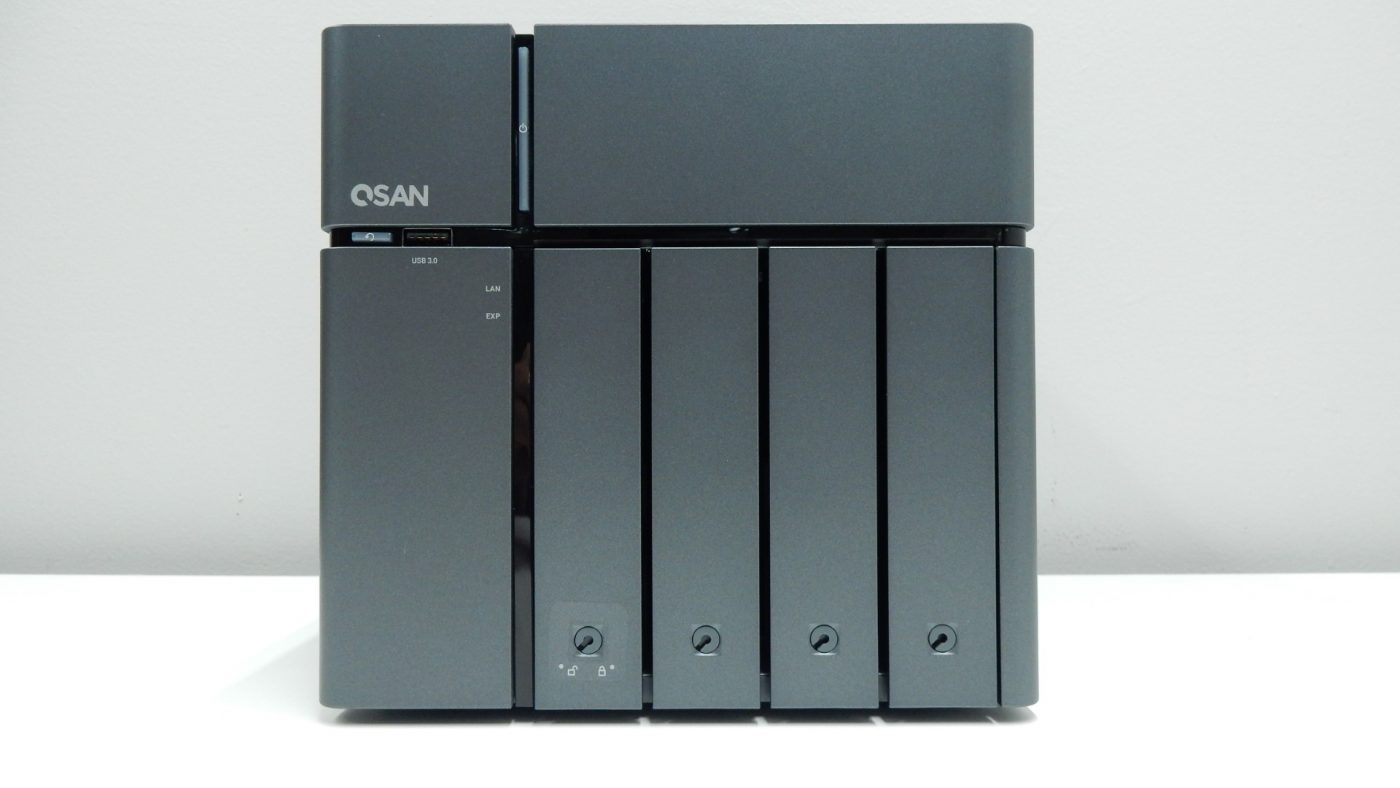Usage
When you first log into the NAS, you are greeted with an OS-like desktop environment. There are four icons on the “desktop” by default, and various links and icons along the top and bottom edges of the screen.
Starting in the top left, we have a QSAN icon that brings up a menu similar to the Windows Start Menu when clicked. From here you can find out some information about your NAS, access the Control Panel and Apps, work with a tutorial, or even restart or shutdown the NAS.
Moving to the upper right corner we have a grouping of additional icons, the first giving us access to background tasks that are currently running on the system. This is a great way to quickly see what is going on with your XN5004T.
A simple bell icon brings up the Notification Center. Clicking this icon will show the latest events that have occurred on your NAS, and the ability to clear them.
The magnifying glass icon allows you to search your installed apps, get setup information, and even help.
The user icon brings up a menu for preferences and logging out. The preferences option lets you set your password, user image, e-mail address, background wallpaper, and recycle bin options.
The “?” icon brings up the integrated help system, which includes information regarding pretty much every aspect of the XN5004T. We really like that the entire help system is right there on the NAS, and not just a link to the QSAN website.
The globe icon gives the quick option to change the NAS’ language settings.
The tachometer icon brings up a system dashboard with a variety of informational panels. System Status gives an overall health check of your NAS, and the Resource Monitor shows how much of the XN5004T’s CPU and memory resources are being consumed. Network gives a quick look at the throughput of the system’s NICs, and Pool shows the throughput for the system’s storage pools. Hardware
gives a list of various hardware components within the system, and their current temperature status. Scrolling down brings us to Storage, which shows your data pools and their current consumption and totals. The Connection List shows the local and remote users currently logged into the NAS, while the VPN Connection List shows a list of users logged into your network with the included VPN utility.
Moving to the menu centered at the bottom of the window, we first have the Control Panel icon on the left. Clicking this brings up an icon-based window that groups various settings into four categories: System, Storage, File Sharing, and Network Service. Each category then has various icons to access features and settings related to that category. These are pretty self-explanatory, and if you have ever worked with another NAS OS, or even the Windows or macOS control panels, you will be more than comfortable finding your way around the system.
The Apps icon is at the center of the bottom menu, and brings up window containing ten pre-installed applications available on the XN5004T. We will cover a few of these applications later on, but as the XN5004T is focused more for business-type work, you won’t find many of the home-use apps like you would on a more consumer-based NAS.
The last icon on the bottom menu is the recycle bin, which allows you to recover and restore files that have been deleted from the NAS. Clicking this icon brings up the File Manager application and takes you right to the Recycle Bin portion of the utility.














